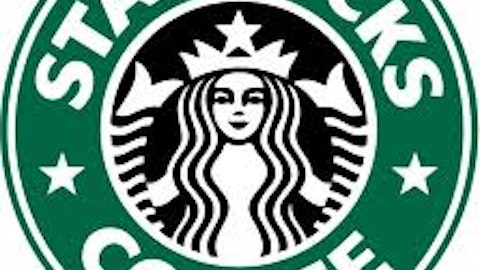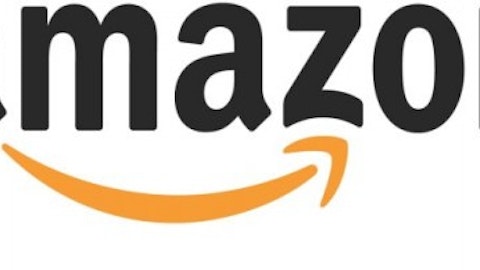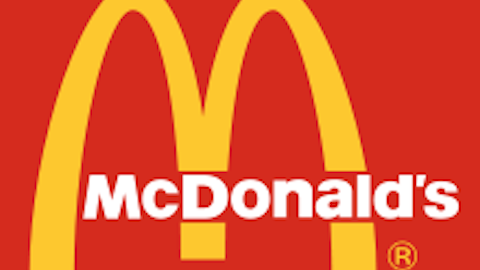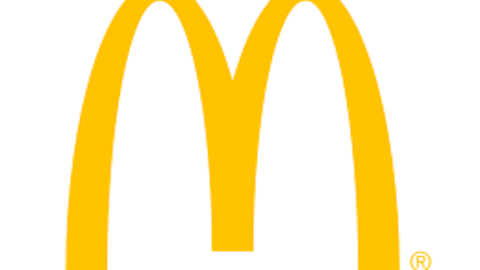
Argument #1: Best Buy is having liquidity problems
The author uses the quick ratio and the current ratio to argue that Best Buy Co., Inc. (NYSE:BBY) is unable to meet its short-term obligations. He goes further to say that this is due to large amounts of inventory that are non-liquid.
It’s important to understand what the quick ratio and current ratio really mean. The quick ratio is the more conservative measure of short-term liquidity, and is defined as the current assets sans inventory minus the current liabilities. The current ratio includes the inventory in the calculation. These ratios as of the end of Q1 are 0.53 and 1.17 for the quick ratio and the current ratio respectively.
The quick ratio, because it ignores inventory, is more meaningful for a company with a low inventory turnover rate. For example, if a company only turns over inventory once every two years the quick ratio is far more important than for a company that turns over inventory ten times per year. In the last fiscal year Best Buy Co., Inc. (NYSE:BBY) turned over its inventory about five times.
So the inventory is certainly important in the analysis. The current ratio is a lot more useful in Best Buy’s case than the quick ratio for this reason. And the current ratio suggests that the company doesn’t have any liquidity problems at all.
For the sake of comparison, last year Wal-Mart Stores, Inc. (NYSE:WMT) had a quick ratio of 0.22 and a current ratio of 0.83, both lower than Best Buy Co., Inc. (NYSE:BBY). Is Wal-Mart Stores, Inc. (NYSE:WMT) in imminent danger of collapse? No, because inventory turnover creates additional liquidity just like in Best Buy’s case. Wal-Mart Stores, Inc. (NYSE:WMT) turns over its inventory about eight times per year, allowing the company to keep less working capital around.
Having a lower working capital is often a sign of efficiency – McDonald’s Corporation (NYSE:MCD) is a great example. In some years over the past decade McDonald’s operated with a negative working capital, specifically in 2003, 2004, and 2007. Was McDonald’s Corporation (NYSE:MCD) ever at risk of bankruptcy? Of course not. McDonald’s Corporation (NYSE:MCD) turns over its inventory well over 100 times per year, allowing the company to operate with very little working capital without liquidity issues. Greater working capital means more capital is tied up just to operate the business, so often the less the better.
Argument #2: The dividend is at risk
The article shows a plot of dividends vs net income, showing net income turning negative, and claims that the company can’t support the current dividend.
But the dividend doesn’t get paid out of the net income. The dividend gets paid out of the free cash flow. Net income turned negative due to non-cash write offs and impairment charges, and once these are backed out Best Buy has been consistently profitable. In fiscal 2013, which lasted only 11 months, Best Buy Co., Inc. (NYSE:BBY) recorded a free cash flow of about $800 million and paid out only $224 million in dividends.
Simply pointing to a negative net income as a reason for the dividend being unsustainable clearly doesn’t go deep enough.
Argument #3: Discontinuing operations is a sign of impending bankruptcy
Best Buy has been closing some domestic stores, and the author claims that this is a sign that the company is in trouble. But keeping unprofitable stores open would be far worse, wouldn’t it? Huge big-box stores make less sense today than they did in the past, and downsizing is the best option. Best Buy Co., Inc. (NYSE:BBY) is opening new, smaller mobile stores even as it closes some larger stores, so it’s clear that the author’s argument doesn’t hold much weight.
Argument #4: Debt is growing and Best Buy is using debt to fund the dividend
The article shows the debt/equity ratio growing over the past five years, and makes the claim that debt is increasing and that the company is using that debt to fund the dividend in an apparent attempt to fool investors. As I’ve already said, Best Buy’s free cash flow more than fully funds the dividend, so the second part of the argument isn’t valid.
At the end of 2007 Best Buy Co., Inc. (NYSE:BBY) had a total interest-bearing debt of $816 million. At the end of Q1 this year that debt has grown to about $1.69 billion. So debt has increased, but not by an enormous amount like the article claims. The debt has actually decreased from its levels at the end of 2008, when total debt was $1.96 billion. So the article argues that a massive increase in debt took place even though debt levels have decreased over the past four years.
The bottom line
Simple ratios and metrics don’t tell the whole story. The quick and current ratios are important but they are almost meaningless on their own. Best Buy Co., Inc. (NYSE:BBY) is clearly not having liquidity problems, it’s not at risk of bankruptcy, and it isn’t funding the dividend with debt. You can believe whatever you want about the company’s long term prospects, but the facts don’t lie.
Timothy Green owns shares of Best Buy. The Motley Fool recommends McDonald’s Corporation (NYSE:MCD). The Motley Fool owns shares of McDonald’s.
The article Best Buy Is Not a Sinking Ship originally appeared on Fool.com.
Timothy is a member of The Motley Fool Blog Network — entries represent the personal opinion of the blogger and are not formally edited.
Copyright © 1995 – 2013 The Motley Fool, LLC. All rights reserved. The Motley Fool has a disclosure policy.




